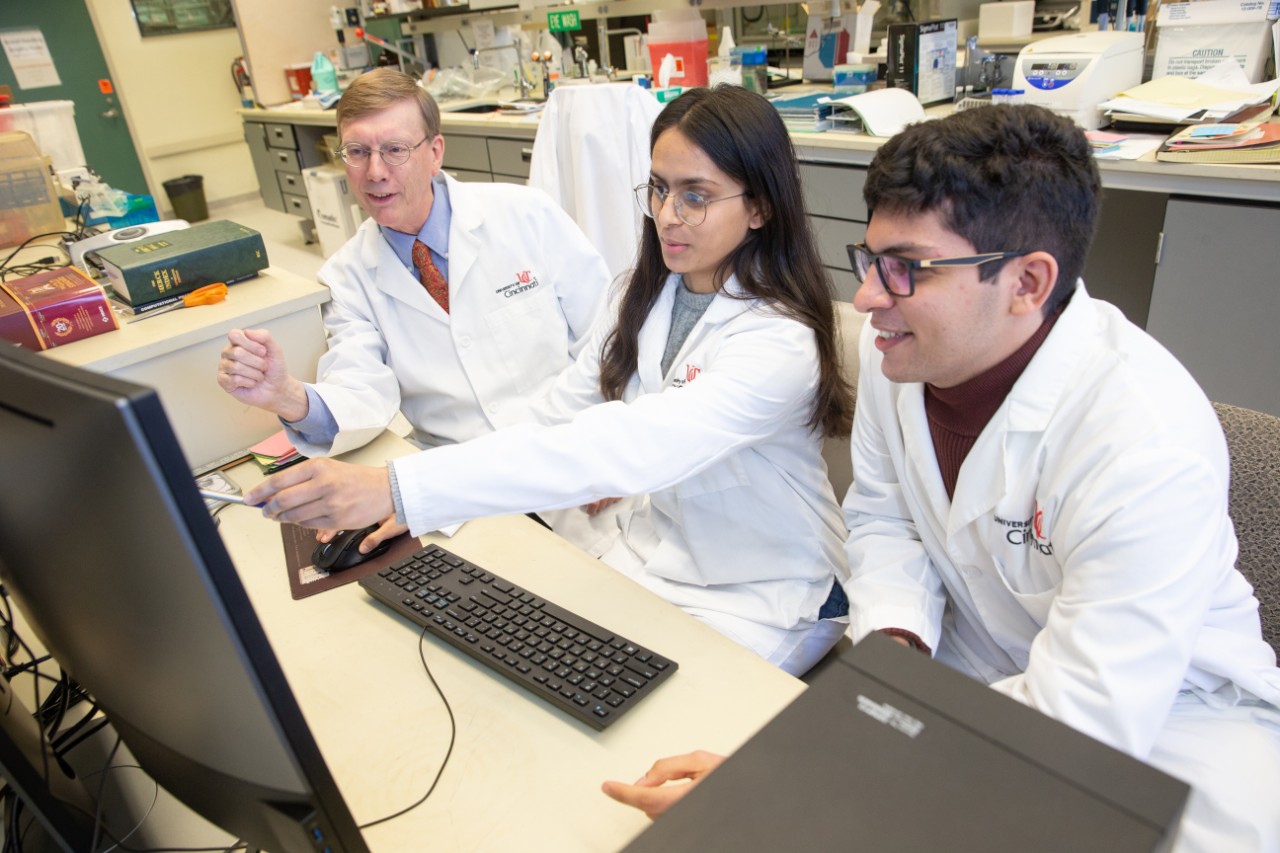
UC cocaine research disrupts traditional theory
Study emphasizes pharmacological explanation behind why people use the drug
For more than 50 years, the conventional wisdom in the field of research in cocaine use has been that people take cocaine based on the theory of the drug providing positive reinforcement to the user.
New research out of the University of Cincinnati shows that a pharmacological equation disproves that concept and could spark a major shift in that field of research.
The study was published in the journal Scientific Reports.
Andrew Norman, PhD, professor in the Department of Pharmacology and Systems Physiology at the UC College of Medicine and corresponding author of the study, says that in 1968, the first paper on cocaine self-administration was published showing that it was an example of operant behavior theory, a method of learning that uses rewards and punishment to modify behavior. It suggests that certain things like food or drugs motivate the behavior according to schedules of reinforcement.
“The theory maintains that the more reinforcing a drug is, the faster users take it,” Norman says. “Interestingly, animals that self-administer cocaine slow down intake as doses get higher, implying that higher doses are less reinforcing, which doesn’t make sense. But at really lower unit doses, the actual number of presses the animal does goes up as you increase the dose.”

Luis Tron Esqueda, student researcher in the UC College of Medicine
It was believed, Norman says, this means that low cocaine doses produce positive reinforcing effects, but high doses produce more rate-limiting effects, so low doses were believed to provide more useful information. He says his research shows that this is not correct.
“We came along in 1998 and formulated this pharmacological-based theory that explained injection intervals, or the time between injections of cocaine” says Norman.
Norman took a different approach by developing an equation with that can be measured quantitatively and it accurately describes the behavior. He says there is none of the elements of “reinforcement” or “wanting” or “liking” that is the basis of the traditional research approach to cocaine self-administration. The study was published in 1999 in Brain Research.
Norman says the recently-published research was led by two students working in his lab, Jhanvi Desai and Luis Tron Esqueda, who suggested they conduct a new experiment building on an explanation of cocaine self-administration that Norman had published in 2001.
Desai and Tron Esqueda revived the research in 2022 after talking with Norman and expressing a desire to design an experiment to test Norman’s original idea.

Jhanvi Desai, student researcher in the Norman lab in the UC College of Medicine
Desai and Tron Esqueda revived the research in 2022 after talking with Norman and expressing a desire to design an experiment to test Norman’s original idea.
“When Dr. Norman was discussing his background, he was explaining to us his previous idea, it was more of an experimental design, and we asked him if he had tested that,” Tron Esqueda says. When Norman said he had not tested that, Tron Esqueda and Desai saw an opportunity.
“When Dr. Norman had initially explained to us the paradigm it was very clear,” Desai says. “We predicted what the data should look like, and when we did the experiments and analyzed the data, we found exactly what we were expecting. The only surprising thing was that it was so obvious to us, so I can’t understand why other researchers don’t see it the way we do.”
A subsequent study Desai conducted which just got published shows another phenomenon. When access to cocaine is terminated rats continue lever pressing for a while, but after the number of presses to get a dose was increased there was a huge increase in the rate of lever pressing for no cocaine, which had never been recognized before.
“The students were right. It was important to do it,” Norman says. “The surprising finding was the huge increase in lever pressing behavior when the animals go on these high schedules of lever pressing which we’d never used before, so I’d never seen that. I believe that is why the field was misled for more than 50 years. They interpreted this as the reinforcing effects of cocaine. Jhanvi’s paper shows that it’s the schedule, not the cocaine that does the ‘reinforcing.’ It’s been misinterpreted all those decades."
UC is a top research university and there is really good mentorship, good resources and the research we do here is top level.
Jhanvi Desai, student researcher in the Norman lab in the UC College of Medicine
“As pharmacologists, we know that drug effects are related to concentration,” adds Norman. “The first question a pharmacologist asks is what is the response that is being induced by this drug. In our case, it’s the lever pressing behavior. Our big innovation with this latest research is that we calculated what the concentration of cocaine is in the body every second of the session. What we show is that there is a range of cocaine concentrations that drive the behavior.”
“We are hoping that it will open up everyone else’s eyes to what’s actually been seen for multiple decades now,” Tron Esqueda says. “It will hopefully start shifting the current idea on how to study cocaine addiction into a newer idea.”
“I think it’s going to be a paradigm shift of how to approach preclinical cocaine self-administration studies in animal models,” Desai says. “This will hopefully be an example of how to design experiments and interpret data appropriately so that the knowledge can be applied to cocaine use in humans.”
Desai, who was an undergraduate neuroscience student in the UC College of Arts & Sciences when she joined the Norman lab, says this project has shifted her career goal from being a medical docdtor to enrolling in the combined research-directed MD/PhD program in the UC College of Medicine.
“This is my first research experience,” she says. “UC is a top research university and there is really good mentorship, good resources and the research we do here is top level.”
All photos/Andrew Higley/UC Marketing + Brand
Next Lives Here
The University of Cincinnati is classified as a Research 1 institution by the Carnegie Commission and is ranked in the National Science Foundation's Top-35 public research universities. UC's graduate students and faculty investigate problems and innovate solutions with real-world impact. Next Lives Here.
Related Stories
UC cocaine research disrupts traditional theory
November 15, 2023
For more than 50 years, the conventional wisdom in the field of cocaine self-administration research has been that people take cocaine based on the theory of the drug providing positive reinforcement to the user. New research out of UC shows that a pharmacological equation disproves that concept and could spark a major shift in that field of research.
UC research examines molecular impact of psychological loss
September 21, 2023
Research from the University of Cincinnati looks at the molecular impact of psychological loss
Cincinnati Enquirer: UC College of Medicine launches addiction research center
October 2, 2020
A research center devoted to the science of addiction and determined to make a national impact has launched at the University of Cincinnati College of Medicine.
